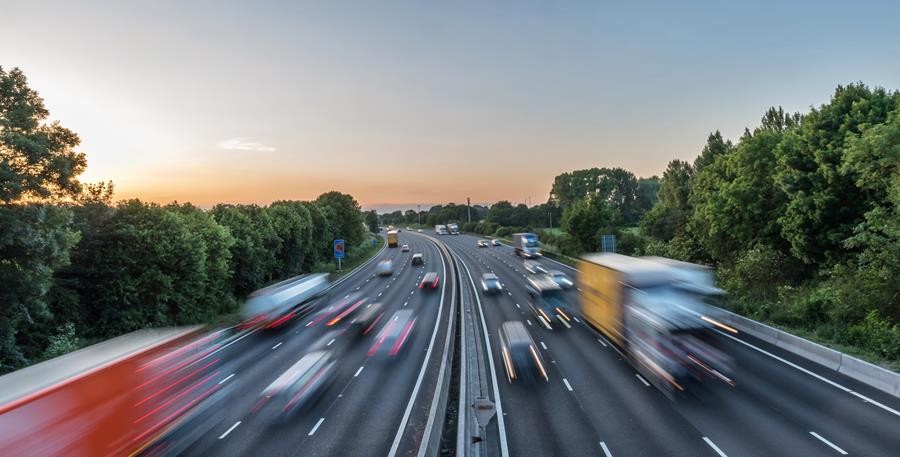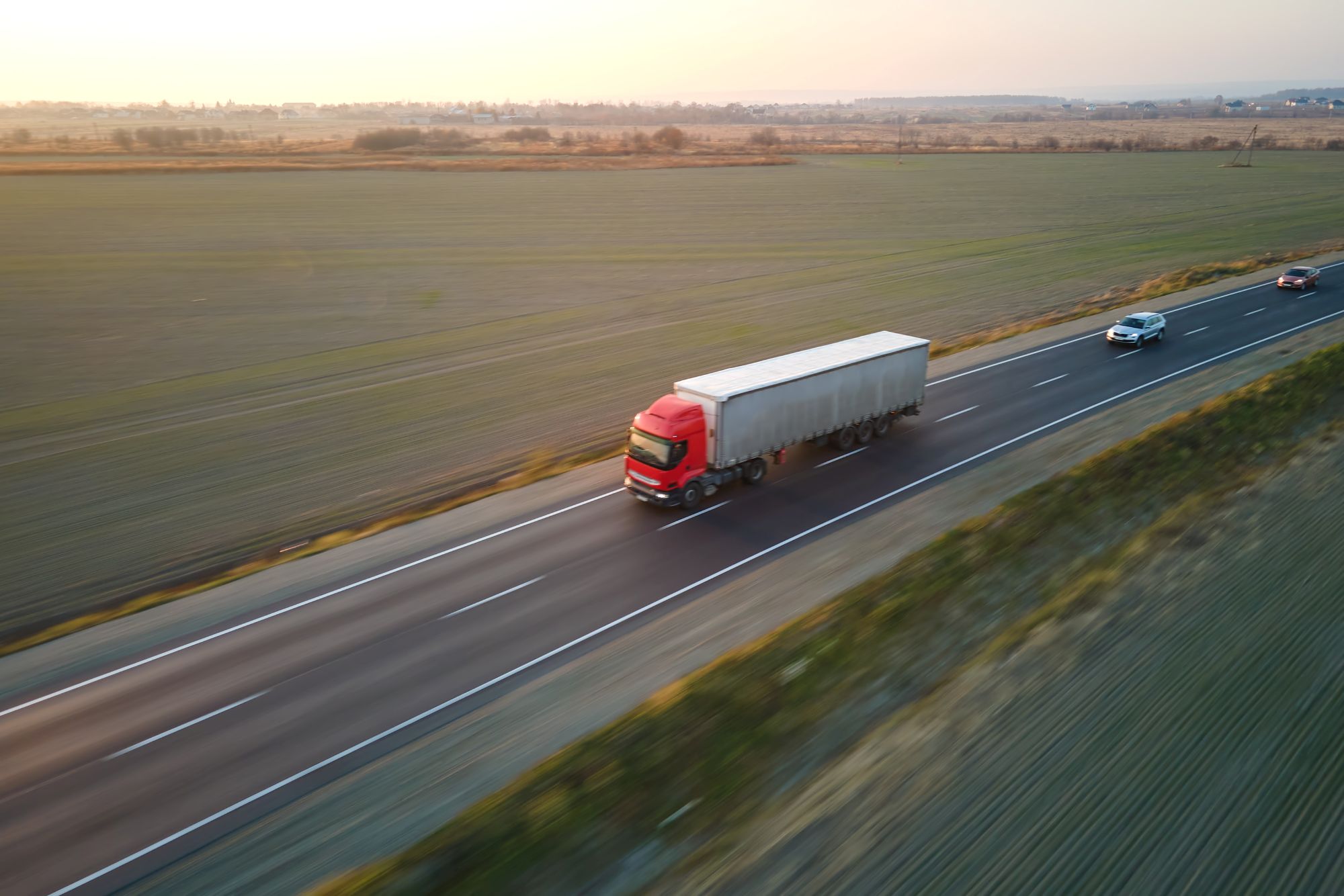
Susie Jones
Kelias į tvarumą: Europos transporto sektoriaus išmetamųjų teršalų problema
Sukurta: 08-08-2024
•
Atnaujinta: 08-08-2024
2024 m. Clean Technica ataskaitoje atskleista, kad daugiau kaip 25 % Europos kelių transporto sektoriaus išmetamų teršalų sudaro sunkiasvorės transporto priemonės, kurios išmeta 85 % teršalų (likusią dalį sudaro miesto ir tolimojo susisiekimo autobusai).
Esant dabartiniam tempui, 2030 m. vien tik transporto sektorius sudarys beveik pusę Europos išmetamų šiltnamio efektą sukeliančių dujų kiekio - nuo 1990 m. transporto sektoriuje išmetamų dujų kiekis Europoje toliau didėjo daugiau nei ketvirtadaliu. Visoje ekonomikoje išmetamųjų teršalų kiekis mažėjo, tačiau nuo 2007 m., kai buvo pasiektas didžiausias rodiklis, transporto sektoriuje anglies dioksido išmetimai mažėjo daugiau nei tris kartus lėčiaur nei likusioje ekonomikos dalyje.
Kokia yra didėjančio CO2 išmetimo krovinių vežimo pramonėje priežastis?
Paplitus elektroninei prekybai ir prekių pristatymo į namus paslaugoms, gerokai padidėjo sunkvežimių poreikis keliuose. Dėl padidėjusios paklausos padidėjo krovinių vežimo sektoriuje išmetamo CO2 kiekis.
Iš Clean Technica ataskaitos apie vidaus krovinių vežimą įvairiomis transporto rūšimis (kelių, geležinkelių ir vandens transportu) matyti, kad Europoje krovinių vežimas kelių transportu yra labiau dominuojantis nei geležinkelių ir vandens transportu, palyginti su kitomis geografinėmis vietovėmis (JAV ir Indija). Nors Kinijoje krovinių gabenimas kelių transportu yra labiau priklausomas nuo krovinių gabenimo, ataskaitoje atskleista, kad šioje šalyje kroviniams pristatyti naudojama apie 600 000 elektrinių sunkvežimių.

Kokie planai yra parengti Europoje, siekiant sumažinti išmetamo CO2 kiekį?
Europos Parlamentas priėmė Europos klimato įstatymą, kuriuo siekiama spręsti didėjančio CO2 išmetimo problemą. Pagal šį įstatymą ES tikslas iki 2030 m. sumažinti grynąjį šiltnamio efektą sukeliančių dujų išmetimą buvo padidintas iki bent 55 % - iki 2050 m. klimato neutralumas tapo teisiškai privalomas.
2024 m. gegužę ES šalys patvirtino įstatymą, kuriuo siekiama sumažinti sunkvežimių išmetamo CO2 kiekį. Pagal naująjį įstatymą bus reikalaujama, kad nuo 2040 m. ES parduodamos naujos sunkiasvorės transporto priemonės būtų be išmetamųjų teršalų, kartu užtikrinant, kad iki tų pačių metų naujų sunkiasvorių transporto priemonių išmetamo CO2 kiekis sumažėtų 90 %. Gamintojai turi parduoti didelį kiekį visiškai CO2 neišmetančių sunkiasvorių sunkvežimių, pavyzdžiui, elektra ir vandeniliu varomų transporto priemonių, kad kompensuotų likusių išmetančių CO2 transporto priemonių pardavimus.
Kokių veiksmų gali imtis automobilių parkų vadovai, kad sumažintų išmetamo CO2 kiekį?
Automobilių parkų valdytojai gali imtis priemonių, kad sumažintų išmetamo CO2 kiekį:
Staigus stabdymas, greitas greitėjimas ir važiavimas tuščiąja eiga gali padidinti degalų sąnaudas ir šiltnamio efektą sukeliančių dujų išmetimą - Nors stebėti vairuotojų elgesį gali būti sudėtinga, dirbtinio intelekto technologija gali užtikrinti nuolatinį grįžtamąjį ryšį vairuotojams ir parko valdytojams. Sužinokite daugiau apie tai, kaip dirbtinis intelektas gali daryti teigiamą poveikį tvarumui krovinių vežimo pramonėje.
Senesnių transporto priemonių parkai gali pereiti prie hidrintu augaliniu aliejumi (HVO), vandeniliu arba elektra varomų sunkiasvorių sunkvežimių ir taip gerokai sumažinti išmetamųjų teršalų kiekį. Tačiau automobilių parkų vadovai turi atsižvelgti į atstumą, kurį gali nuvažiuoti alternatyviais degalais varomos transporto priemonės, ir išlaidas.
SNAP paskyra leidžia automobilių parkų valdytojams sumažinti apvažiavimo kilometražą - SNAP paskyros klientai gali naudotis daugiau kaip 600 paslaugų partnerių, todėl automobilių parkų valdytojai gali suplanuoti vairuotojų sustojimus su nakvyne maršrute.
Ar yra infrastruktūra elektra varomoms sunkiasvorėms krovininėms transporto priemonėms įkrauti?
Remiantis PwC tyrimu, iki 2030 m. trečdalis visų sunkvežimių Europoje bus elektriniai. Kadangi automobilių parko įmonės imasi elektrifikavimo veiksmų, sunkvežimių stotelės visoje Europoje turi būti pajėgios patenkinti elektros įkrovimo stotelių poreikį.
Daugeliui sunkvežimių sustojimo aikštelių ir degalinių infrastruktūra kainuos brangiai. Tačiau tos, kuriose jau įrengti elektromobilių įkrovikliai, turi visas galimybes pasinaudoti būsimų elektrinių sunkvežimių bangų privalumais. Iki 2030 m. viešųjų įkrovimo stotelių Europoje padaugės iki daugiau nei 3600 - ES pateikė plataus užmojo įkrovimo įstatymą - Alternatyviųjų degalų infrastruktūros reglamentą (AFIR). AFIR planuojama kas 60 km įrengti pagrindinių kelių tinklą su įkrovimo punktais, kurie užtikrins pakankamai įkrovimo energijos ir vandenilio pajėgumų, kad iki 2030 m. 9 % sunkvežimių ir tolimojo susisiekimo autobusų parko transporto priemonių nebūtų išmetama jokių teršalų.
Kurioje Europos šalyje išmetama daugiausia CO2?
2021 m. Vokietija, Prancūzija ir Italija buvo atsakingos už didžiausią bendrą šiltnamio efektą sukeliančių dujų (ŠESD) išmetimą - nuo 375 000 iki 740 000 kilotonų CO2. Tačiau šalys, kuriose gyvena daugiau gyventojų, išmeta daugiau ŠESD - todėl žiūrint į bendrą išmetamų šiltnamio efektą sukeliančių dujų kiekį gaunamas iškreiptas vaizdas.
Žvelgiant į nešališką išmetamųjų teršalų kiekio vertinimą, galima susidaryti kitokią nuomonę - 2021 m. Liuksemburge, Airijoje ir Čekijoje vienam gyventojui tenkantis išmetamųjų teršalų kiekis buvo didžiausias ES.
Koks prekių gabenimo būdas yra draugiškiausias aplinkai?
Krovinių gabenimas geležinkeliu yra vienas iš švariausių transporto rūšių, tačiau jis turi ir kitų privalumų:
Mažėja spūstys keliuose, o tai prisideda prie geresnės oro kokybės.
Geležinkeliu galima greičiau gabenti prekes ir pašalinti sunkiasvores eismo kliūtis.
Alternatyviais degalais varomi sunkvežimiai yra dar vienas aplinkai draugiškas būdas gabenti prekes. Naudojant hidrintu būdu apdorotą augalinį aliejų (HVO) galima iš karto sumažinti iki 90 % šiltnamio efektą sukeliančių dujų emisiją, palyginti su standartiniu dyzelinu, per visą produkto gyvavimo ciklą. Kompanija Certas Energy HVO prisideda prie perėjimo prie švaresnės alternatyvos - padeda įmonėms siekti savo tvarumo tikslų ir žengti reikšmingus žingsnius link savo "grynojo nulio" ateities.



